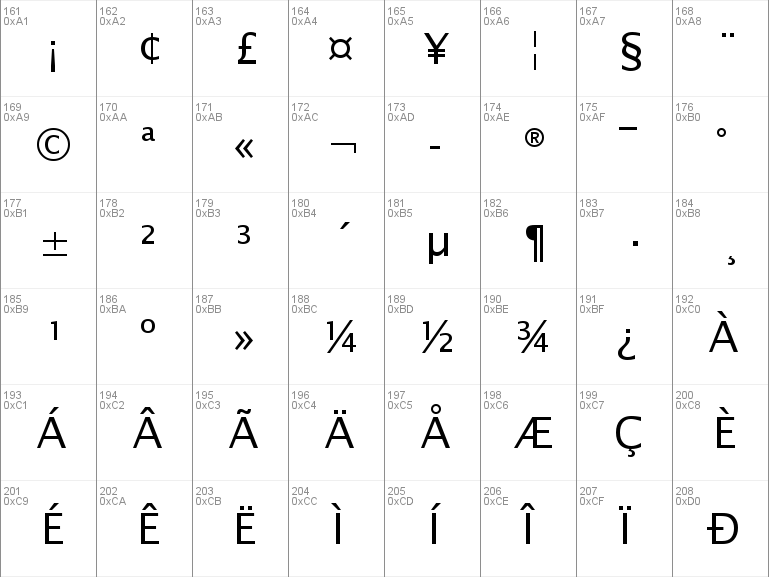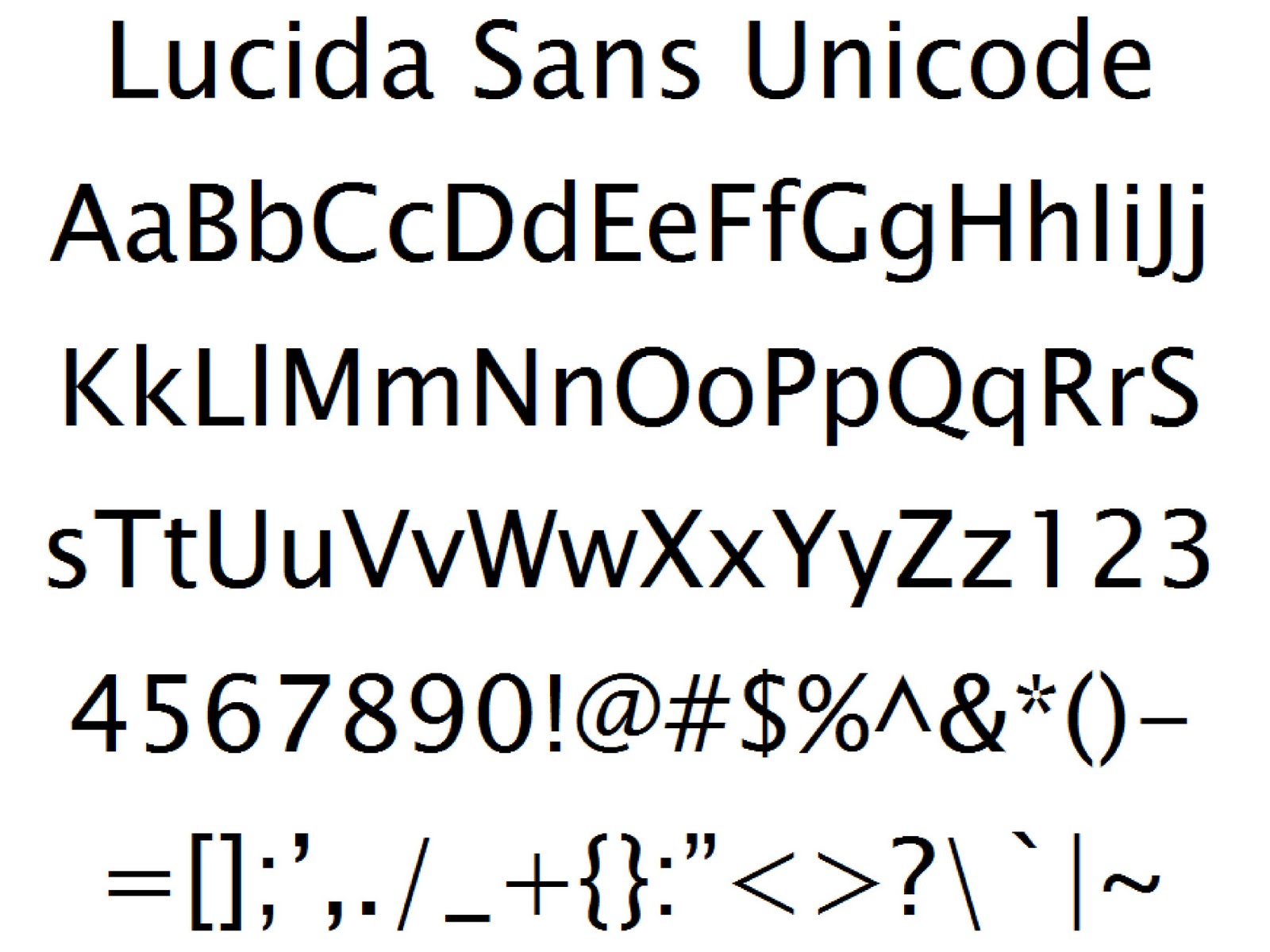

- LUCIDA SANS UNICODE ITALIC HOW TO
- LUCIDA SANS UNICODE ITALIC SERIES
- LUCIDA SANS UNICODE ITALIC WINDOWS
Lucida Math Italic contains Latin characters from Lucida Serif Italic, but with smaller line spacing, and added Greek letters. Lucida Math Extension contains only mathematical symbols. It contains ampersands, interrobangs, asterisms, circled Lucida Sans numerals, etc.Ī family of fonts for mathematical expressions. In 2014, Bigelow & Holmes added additional weights and widths to the family.Ī family of fonts for ornament and decoration uses. Derived from Lucida, and specifically designed for telefaxing.Ī font, released in 1992, designed to resemble informal cursive handwriting with modern plastic-tipped or felt-tipped pens or markers. Lucida Console is a Monospaced font.Ī slab serif font family released in 1992.
LUCIDA SANS UNICODE ITALIC WINDOWS
From Windows 2000 until Windows 8, it has been the default font for Notepad. In 2014, Bigelow & Holmes released bold weights and italics in normal and narrow widths. Subclass CharToByteConvertor (or one of its subclasses).A variant of Lucida Sans Typewriter with smaller line spacing, and added WGL4 character set. This can be accomplished with the following two steps:ġ. The glyphs are indexed 0, 1, and 2 in the font, and the user wishes to map these into the Unicode characters \uE800, \uE801, \uE802 (three Private Use Area characters in Unicode).
LUCIDA SANS UNICODE ITALIC HOW TO
To support Gaiji fonts, Java must be told how to map between the Gaiji font and Unicode.įor example, assume a user has a font which contains exactly three glyphs. These characters are called Gaiji in Japan. Fully specified names take priority over abbreviated ones.Įspecially in the Japanese market, many end-users require specialized fonts for non-standard characters. The following example shows how this is done:Įxclusion ranges can be abbreviated in the same way the name mappings are. Exclusion ranges can be set on a host font to prohibit characters from being displayed with that font. The priority ordering of host fonts may not be sufficient to specify the desired mapping when multiple host fonts overlap. The aliasing of the new font names to the old names is accomplished with the following entry If the default character can not be mapped, the ASCII `?' is used. The default character is specified in terms of its Unicode value, as shown below. The font properties file can also specify a default character to be displayed in place of characters that can not be rendered with the given mappings. If a Unicode character can be displayed with multiple fonts in a mapping, the font with the lowest component number will be used. The component font number gives a priority to each host font. Fully specified mappings take precedence over those without the style name. If the style name is omitted, the mapping applies for all styles in that family. # and Lucida Sans Unicode Regular as component font 3. # Any style fonts use WinDings as component font 2 The example that follows is a font property file with values that might be used on a Windows platform:

For a locale to be supported, an adequate font property file must exist. The JDK ships with font property files that cover all supported locales. Three replacements for these names: Serif, SansSerif, and MonoSpaced. Very specific and do not apply to many locales. Included the font names TimesRoman, Courier, and Helvetica, which were Host fonts, it is appropriate that they have generic names. Since Java font names are virtual names that can represent multiple Much of the Unicode character set as is desired.


LUCIDA SANS UNICODE ITALIC SERIES
Name can map to a series of host fonts, which can be chosen to cover as Java font name mapped to exactly one host font. The runtime provides a small number of predefined "virtual" font names,Īnd maps them to real fonts available on the host. Java programs running on 1.1 or 1.2 can display any Unicode character which can be rendered with a host font. The Java 1.0 platform was limited to displaying only the characters in


 0 kommentar(er)
0 kommentar(er)
